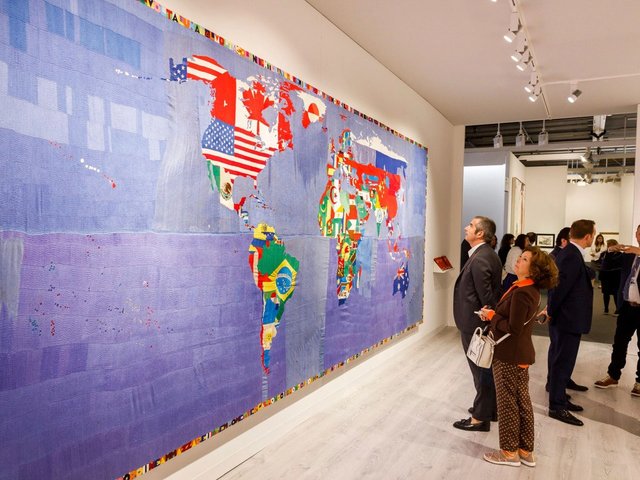The art market went back to school with a vengeance in September, with unusually high levels of activity that sought to make up for the pandemic’s purdah. A half-term report would give A-plus grades for energy and enthusiasm, but the high marks don’t apply across the market.
First the good report. The hybrid fantasy that online business would bring more interest in art once it came back to real life seems to have come true. The traditional buyers have stayed loyal and have been joined by new entrants—many under the age of 40. Business from Asia, where travel is still restricted, is in overdrive. Prior to the pandemic, art market professionals cited finding new buyers as a priority; come 2021, this seems to have been achieved. So another A-plus.
The problem is one of sustainability. Gallerists still say that, in an ideal world, they would do fewer fairs, so while there has been real enthusiasm for the back-to-back Art Basel, Frieze and Fiac events, their novelty value could soon wear off. Right now, there’s no meaningful alternative, either to present new trends in art or have what Marc Spiegler, director of Art Basel, calls “high-level accidental meetings”. But the art fair model doesn’t seem to be moving the dial enough to stop the alternatives we crave pushing through. Recently formed galleries, ranging from the latest mega-merged LGDR to David Zwirner’s experimental commercial project space 52 Walker in New York, have limited enthusiasm for art fairs. So, despite their A for effort, fairs still rank an average C so far this term.
Auction houses seem to have found a more enduring model, but what they are selling likely has a short shelf-life too. The 20- and 30-something artists who sold for seven-figure sums this season will not long be at these levels. Like the highly volatile NFT market, the fundamentals of valuation for newbie art are still too flimsy. When this season’s buyers realise that prices can go down as well as up, the speculative ride will be less fun. The global reach of auction houses is unmatched, but it is uncertain for how long they can keep keeping up with ephemeral trends. So a solid B grade seems about right for now.
As for the galleries themselves, they are doing what they can to avoid being swallowed up by this currently relentless and financialised market. Initiatives such as the International Galleries Alliance—a union for contemporary art dealers—show how the pandemic’s spirit of collaboration has been a force for good. The big questions are whether these galleries can remain as free of hierarchy and competition as they intend and what actual outcomes they can produce. It feels like an uphill struggle, but they have some things on their side. It is unlikely that an algorithm can nurture and manage artists. And artists, without whom none of this exists, need a gallery’s help and protection more than ever. So, provided that this is the market that we all still want, the gallery community gets a B-plus. But as our world splinters, let’s hope we still all belong to the same schools.






